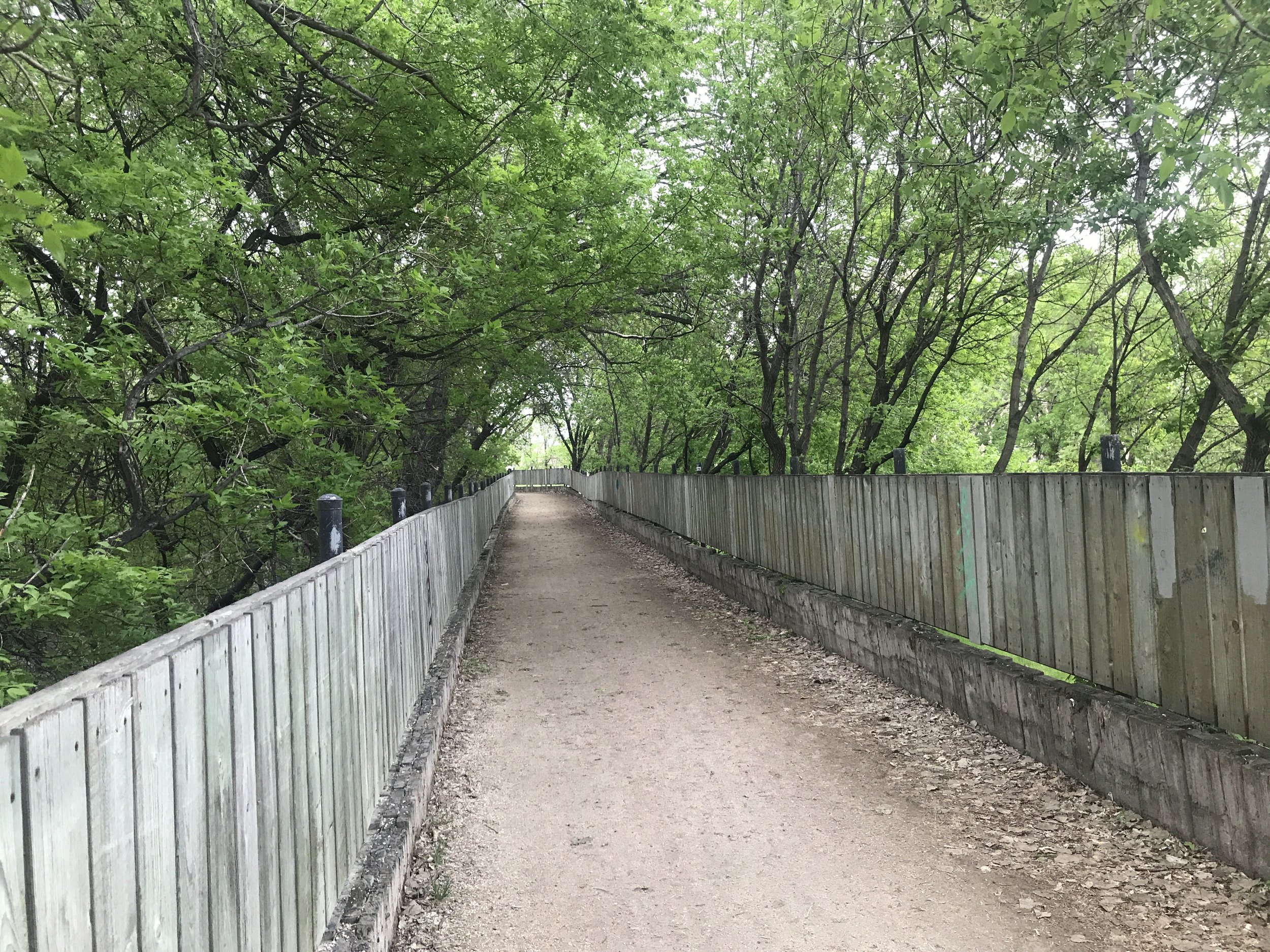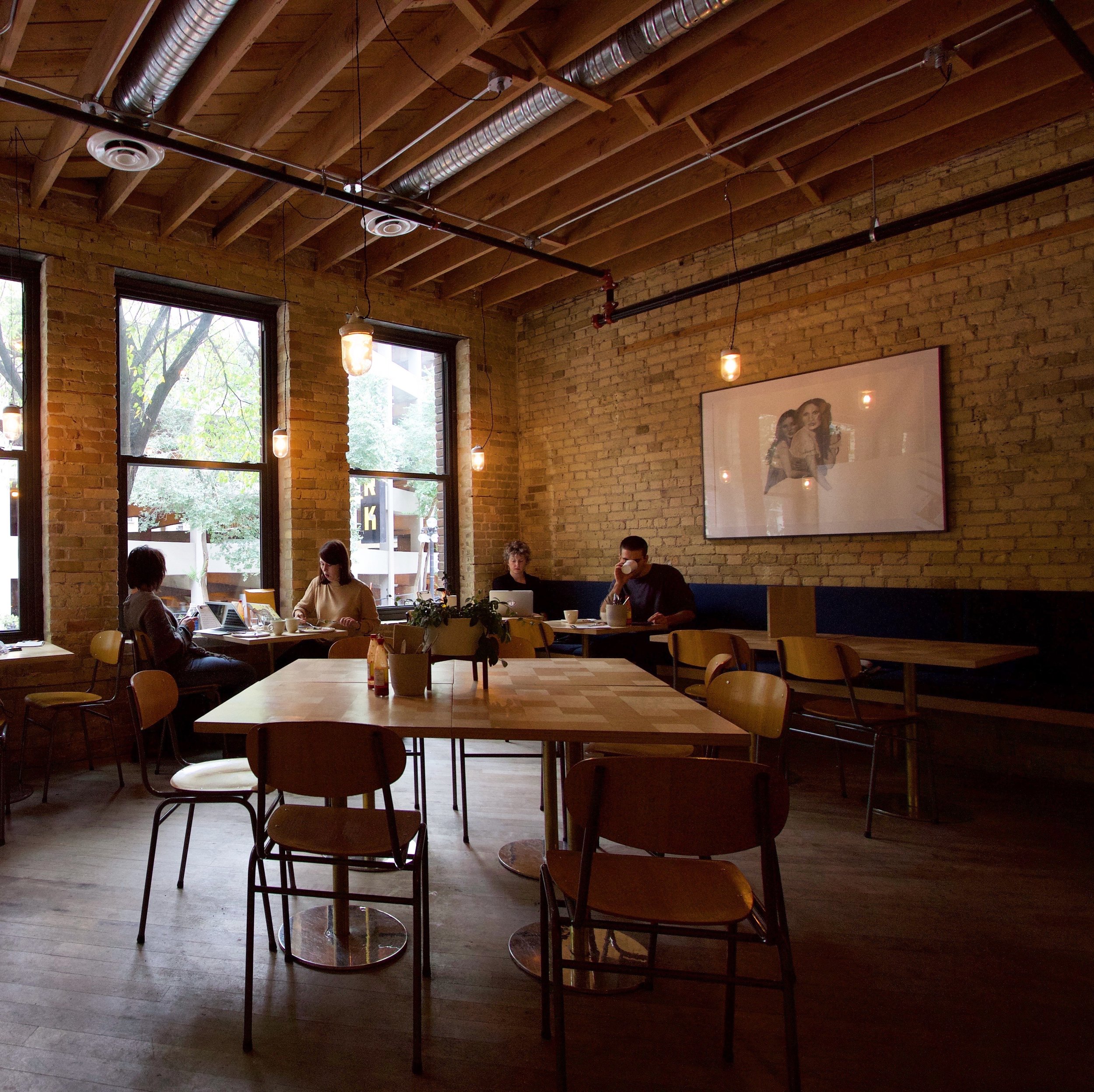If it’s not Intersectional, it’s not a Feminist City
Woman of colour cycling on bike path. Photo taken by Nicole Roach, 2021, Amsterdam, Netherlands
Cities have been “man made” - designed by, built by, and made to prioritize men in accordance with patriarchal systems. As a result, cities have not always considered the diverse needs of everyone, particularly, women.
Fortunately, there are plenty of interventions available that can make cities more “women-friendly”. However, not all of those interventions are “everyone-friendly”.
Many feminist interventions fail to consider intersectionality, which recognizes the interconnected nature of various social or identity factors, such as sex, gender, age, race, ethnicity, Indigenous identity, economic status, immigrant status, sexual orientation, disability, and geography, as they apply to a given individual or group, viewed as impacting experiences of discrimination or disadvantages. This often results in the prioritization of wealthy, white women above Black, Indigenous, People of Colour (BIPOC), LGBT2SQ+, low-income persons, immigrants and refugees, people “living rough”, disabled persons, elderly people, and so on.
When it comes to creating feminist cities for everyone, the solutions aren’t always clear and simple. Even with the best of intentions, feminist interventions can result in harm for many women, men, and non-binary folk. Let’s explore these complexities through the contexts of urban green spaces, public spaces, and privatization.
Pave Paradise
Having access to nature in cities is essential for urban dwellers’ health and well-being. While urban greenspaces are beautiful and important, they are not always able to be enjoyed by everyone equally. Urban greenspaces are not equally available within cities and often pose considerable risks for women, due to lack of lighting, many dark corners and hiding places, and being secluded from other people.
Like many women, I have experienced the dangers first-hand.
Content Warning: sexual assault
In the summer of 2020, I was running along a nature trail in Winnipeg that edged on a river, surrounded by trees, and had wooden boards on each side. While moving along at a leisurely pace, a man biked past me and placed his hand on my ass - not necessarily a squeeze or a slap, but a deliberate and lingering graze.
At this moment, I thought of yelling, but no one was around, no one would hear me. I even thought of chasing after him, but what if he had a weapon, what would I do when or if I caught up with him?
Instead, I just stopped. Perplexed and angry that someone felt they could touch me that way in public, that they did it to just intimidate and dominate me.
When running back home, the perpetrator was still biking around and I was able to catch a glimpse of him from the front. When he met eyes with me, he looked immediately embarrassed and ashamed, then biked away quickly. From my quick glance, he appeared to be a young black man.
After the incident, I was faced with the decision of whether or not to report it to the police. For context, this was shortly after the George Floyd protests that took place across the world and there were loud calls to defund the police across North America. Do I call the police and say a young black man on a bike sexually assaulted me - which may cause lethal harm to black men in the downtown core - or do I not report it and risk other women having a similar experience, or potentially much worse?
I didn’t report it.
Urban nature path with wooden fence enclosed by trees. Photo taken by Nicole Roach, 2020, Winnipeg, MB
Instead, I shared a photo on Twitter (the one seen above) of where it happened, sparking lots of discussion around the safety of the trail and what interventions could be done to improve the safety of women and other vulnerable people. Some suggestions included lighting, removal of the wooden boards on each side, or putting more access points along the path. In other contexts, people may argue for tree removal to reduce blind spots, elimination of benches where people “living rough” may sleep, or simply paving it over for a “safer” parking lot or new development - an option that takes public green space away from everyone.
While some of these interventions may improve the perception of safety for some women, they could also cause harm to many other people. For example, the removal of trees and greenspace actively harms Indigenous people, by depriving them of resources, culture, and contributing to the further loss of traditional knowledge. The elimination of park benches or encampments harms society’s most vulnerable through forced displacement - which has been carried out by police numerous times in Toronto and Hamilton in recent years. The removal of urban greenspace - or, rather, paving paradise - causes the most harm to low-income people living in apartment buildings, who do not have access to private green space, such as a backyard.
It is challenging to identify feminist interventions for green spaces that benefit everyone, but the place to start would be with inclusive place-making, community programming, and space activation - all of which can help to bring people and energy into public spaces.
Police On-Board
Public transit is vital in connecting people to services, education, employment, amenities, and each other. It is one of the best tools to address the many failings of the private automobile, with transit being efficient, cost-effective, and sustainable.
While public transit is fantastic in theory, it isn’t always fantastic in practice. It’s not the bus’s fault or even the drivers’ fault, but mostly the fault of limited government funding and an over-reliance on fares. These circumstances have contributed to many public transit systems in Canada being expensive for passengers, unreliable, and uncomfortable.
For women, who make up the majority of transit users, relying on unreliable public transit can make them especially vulnerable when they find themselves in uncomfortable or unsafe situations. For example, it is common to experience unwanted attention or sexual harassment while waiting for the bus, while on the bus, or trying to get off the bus without being followed.
In the spring of 2015, I was nervously busing my way across Hamilton for the first time. A man seemed to take a particular interest in me, asking me lots of personal questions and not willing to let the conversation die even when I turned back to my book. I took the typical “polite” approach to this unwanted attention, with a strained smile and subtle nod. I had considered moving seats, but that would look rude… so I stayed put, hoping he would divert his gaze and attention elsewhere.
People continued to get off the bus with each stop, as I hoped his stop would come before mine. I became more and more scared that on one hand, it would be just me and him on the bus, or on the other hand, he would try to follow me home from my stop. Fortunately, he got off at the stop before mine, but the feeling of such vulnerability and uncertainty stayed with me.
City bus driving through Wolseley in winter. Photo taken by Nicole Roach, 2019, Winnipeg, MB
To improve women’s safety on public transit, the solutions that are often considered include additional police or guard presence, security cameras, and/or changes to women’s behaviour. Such interventions may increase the perception of safety for particular women, mostly those who are wealthy and white, while harming many others, such as women of colour, who are more reliant on public transit. For example, additional police or guard presence, whether it be at transit stops or on the trains/subways/buses, disproportionately harms BIPOC through racial profiling. The use of security cameras is rarely effective as a method of deterrence and can be a considerable invasion of privacy, which impacts women fleeing domestic abuse and many other dangerous situations. Women are frequently expected to change their personal behaviour to protect themselves, like not riding the bus late at night, adjusting their routes, or choosing alternative modes of transportation. This impacts many shift workers, many of whom are WOC, as they are unable to adjust their schedules based on safety concerns nor do they have access to other transportation options.
Again, it is not simple to identify feminist interventions for public transit that benefit everyone, but the best place to start would be making transit more reliable through increased service, more accessible by removing fares entirely, and helping to make the journey more comfortable and spacious for all riders.
Privatize It
As I’ve outlined above, public spaces are vital but do not always feel safe for women. Some public spaces feel unsafe because they are in a “rough” part of town - which is usually characterized by low-income housing, under-resourced community services, and over-policing.
For some wealthy, white women, they are able to avoid these parts of town entirely, to not have to interact with the people living there. When these “rough” parts are in the process of being gentrified - changed in character by wealthier people moving in, typically displacing current inhabitants in the process - more affluent women often seek out private spaces that “protect” them from their immediate surroundings that are still seen as “rough”. This can take the form of luxury condominiums that have on-duty security guards and advanced security systems, gravitating to private shops and restaurants, and/or utilizing private modes of transportation.
I don’t have a personal story for this topic, because, frankly, I am a well-off white woman who has grown up in immense privilege. I have absolutely benefited from having access to “safe” and “private” environments that exclude others and I have felt incredibly vulnerable to be without those comforts. More specifically, I purchased a condominium - no security, mind you - in a part of Winnipeg that was previously home to many musicians, artists, and a heavy grunge scene, but was rapidly changing with new developments and boutiques, perpetuating the gentrification process. I also gravitate heavily towards private shops and restaurants, feeling comfort and safety the second I walk in the door, feeling like I escaped whatever I had encountered outside on the street. I have also benefited from private modes of transportation, growing up with parents that had many vehicles and were happy to chauffeur me wherever I wanted. In fact, I might not have ridden a public bus until I was in university - when I was about 18 years old! Long story short, I am definitely part of this problem.
Efforts to privatize, with affluent white women as a “key indicator species” in this instance, undoubtedly harm others. The development of luxury condominiums usually comes with the displacement of more affordable housing alternatives, harming low-income people, and the privatization of “safety” harms anyone who does not live there. Gravitating towards private restaurants and shops is understandable, as these were historically gendered spaces designed for women, but play a key role in gentrification and the further privatization of public goods. For example, upscale boutique shops often displace more affordable, practical shops that are needed for residents and restaurants contribute to the further privatization of things like seating and washrooms. Lastly, private modes of transportation, such as a personal vehicle or ride-hailing services (e.g., uber, lyft, etc.), allow the wealthy to bypass public transit, clogging up public streets and luring government funding towards these private “solutions”. The town of Innisfil, Ontario even went as far as funding Uber as their public transit system - which, um, didn’t work out as intended! This experiment ended up costing the city more money than it would have been to set up a “real” public transit service. Such privatization harms public transit users and all road users, whether on foot or wheels, which are also more commonly BIPOC and low-income persons who cannot access the available private services.
Brick-walled café with people working and drinking coffee. Photo taken by Nicole Roach, 2017, Winnipeg, MB
Feminist interventions for addressing gentrification and privitization in “rough” areas of cities will most likely not go far enough, as these issues require multi-level government policy solutions. This may include policies such as the wide scale development of affordable housing (e.g., market regulation, changing of zoning by-laws, elimination of parking minimums, etc.), the redistribution of public funds away from police towards life-sustaining community services, and providing equal distribution of public goods across cities (public transit service, bike lanes, parks, washrooms, etc.).
Intersectional Approach
As I have outlined, many “traditional” feminist interventions prioritize wealthy, white women over BIPOC and low-income persons. Such interventions even go as far as to actively harm those other groups, which include many women.
This is why an intersectional approach is needed, which considers the diverse needs of everyone, especially those with multiple social and/or identity factors, and prioritizes the most vulnerable.
To implement this approach well, planners, designers, and decision-makers must apply an equity-based framework to their work and ensure extensive community engagement. This process may take longer, but it is the only way to prevent the implementation of interventions that better one group while harming another.
This intersectional approach to building feminist cities is the only one, we believe, that can make places truly better for everyone.
References:
https://www.nature.org/content/dam/tnc/nature/en/documents/Outside_Our_Doors_report.pdf
https://www.cbc.ca/news/defund-the-police-canada-1.5605430
https://nowtoronto.com/lifestyle/education/not-all-commutes-are-created-equal





